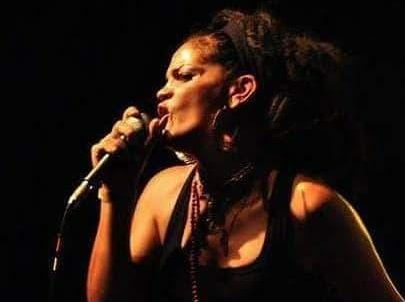For Black people in Argentina, being treated as an invisible minority has been the reality for a very long time. Portrayed as the whitest country in Latin America, the saying “Aqui no hay negros” (“There are no Blacks here”) has been very popular among Argentine citizens.
However, over the past few years this situation has been changing. Even though they currently represent less than 1% of the entire population, Black Argentines are speaking up and demanding more visibility within the country.
“Afro-Argentines can be seen in every aspect of our national culture,” singer and activist Laura Omega. told Travel Noire. “But, due to structural racism, which makes invisibility a natural act, the country abandoned our ethnic identity and chose to cancel the contributions of Black people. Now, we want our voice to be heard”,
Federico Pita, another Black activist and president of the African Diaspora Organization in Argentina (Diafar), agrees with Omega.
“What happened was a deliberate policy to whiten the country,” he said.
“One of the ways to do this, according to him, was to eliminate the ethnic origin of the population from the censuses,” says Pitta to Piauí, a Brazilian magazine.
Diafar has been promoting courses and debates on racism and the history of Black Argentines.
Owning a barbershop in Buenos Aires, Pita also uses the space as a small cultural center named Espaço Malcolm. The place is attended by the neighbors of Villa Crespo, located on the outskirts of Buenos Aires. There, they watch documentaries about Black leaders such as Martin Luther King Jr., Malcolm X, Nelson Mandela and Angela Davis. There is also a shelf full of books on racism and black history.
He said that the death of the American George Floyd helped to increase the interest in the Black cause in Argentina.
In July, Diafar created the School of History and Afro-Diasporic Thought, which started with a virtual course given by professors from the United States, Brazil and Puerto Rico.
“There is a growing awareness that Argentina is not as white as they say,” says Pita. “We spent years denying our roots. Many people still think that there are no black Argentines. Why would they recognize, overnight, that they have African ancestors, if they have nothing to gain from it?”
Although it is true that historically the percentage of Black Argentines in this South American country has been much lower than in other Latin American nations, things were different in colonial times. As historical records show, 200 years ago in cities like Buenos Aires, blacks came to represent more than 20% of the population.
Enslaved Africans arrived mainly through the ports of Montevideo and Buenos Aires. From there some were sent to hinterland provinces of present-day Argentina. Many of them stayed in the cities to do housework. Others were forced to work in the fields or in the mines.
It was in the mid 19th century when Afro-Argentines began to be diminished. Government leaders wanted to turn Argentina into a European country and created public policies to attract European immigrants, mainly from Italy, Spain and Germany. Along with that, thousands of Afro-Argentines, who were forcibly recruited into the Argentine army, died fighting in the bloody war between Argentina and Paraguay from 1865 through 1870.
Omega, who descends from historical Black activists, said that Argentina’s society always worked to hide its slavery past.
“It’s like saying to themselves that Argentina has nothing to do with African slavery in the Americas, which is far from being true,” she said.
Omega’s family origins date to 1750 when they created the abolitionist group called ‘La Unión’ (The Union), which among many activities, raised funds to free slaves in Argentina.
Despite this whitening process of the Argentine population, Omega states that 60% of the country’s culture is influenced by its Black population.
“Tango, chacarera, malambo, milonga are cultural movements created by Afro-Argentines, whose black reference is neglected and seen as white cultural manifestations.” She added “In the Constitución train station, in Buenos Aires, the visitor can see some Argentines performing the traditional chacarera dance, which has Bantu roots. However, for many Argentines it is called folk tradition to erase the Afro-descendant identity.
